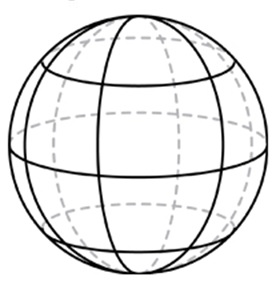
In order to know the prior knowledge the student has about three dimensional objects a mini lesson on two dimensional versus three dimensional would be beneficial. In order to see their understanding of object in three dimension or two dimension I would place two bins labeled ‘3d’ and ‘2d’ and give the student a pile of objects to sort. In that pile would several 2 dimensional shapes and several three dimensional shapes. After sorting the objects I would ask the student to explain further how he knew which objects were 2d and which were 3d. Two dimensional objects are flat and have length and width. Three dimensional objects are objects they can pick up, touch, and move around and have the third dimension of depth. Learning to sort shapes builds on the child’s cognitive ability; understanding shape is a tool for learning many skills in all curriculum areas, from math and science to language and reading. When a child learns to discern the similarities and differences between shapes, she or he is using the same skills they need to recognize the differences between letters and numerals.
Next the student would be given only examples of two dimensional circles and three dimensional spheres. Using a paper plate, a quarter, and clear bingo chip for the circle examples and a basketball, globe, marble, and an orange for the sphere examples the student would then sort the groups of spheres and circles. I would then ask them why they sorted them the way that they did and what some differences are between the sphere and circle. For example they could tell me a sphere can roll, has no corners or flat surfaces while a circle in flat. Comparing a different 3d object to a sphere, such as, a cube I would ask what difference these two objects have. Some of their answers may include that they cube can be stacked while the sphere cannot be but the sphere can roll and the a cube cannot. Doing these three mini exercises will give the student as well as myself what properties the student knows already about three dimensional objects, specifically spheres.
Just having the child take a look around the room would be a good test for them to point out some two dimensional objects and some three dimensional objects they see around them. Together we can take note of the curves, angles, and lines which create these objects. Geometry is everywhere you look; all things are made up of angles, shapes, lines, line segments, and curves.
Building off the curves of the objects in the room I would introduce my sphere manipulative. Having them draw a line segment on a dry erase board they could see the concept of a line segment; a straight line. Next I would have them draw a line from one point to another of the sphere manipulative and tell me the difference between the line on the dry erase board and the line of the sphere; the line of the sphere is a curve. A curve would be represented in the same manner; however, instead of being straight the portion between the two end points would be curved.
Through my sphere manipulative I would hope to achieve my goal of ‘whole-brain thinking’. For most people one side of the brain is preferred but a connection between the two is best for whole-brain thinking. When you think with your brain as one organ rather than pieces, geometry is at work because geometry is a subject where all parts of the mind have a job. Boxed thinking is considered null in geometry but thoughts on a larger plane are necessary when doing geometry. Bringing something like my sphere manipulative to teach geometry will bring more concrete concepts to geometry for those students who cannot grip on non-tangible concepts.
